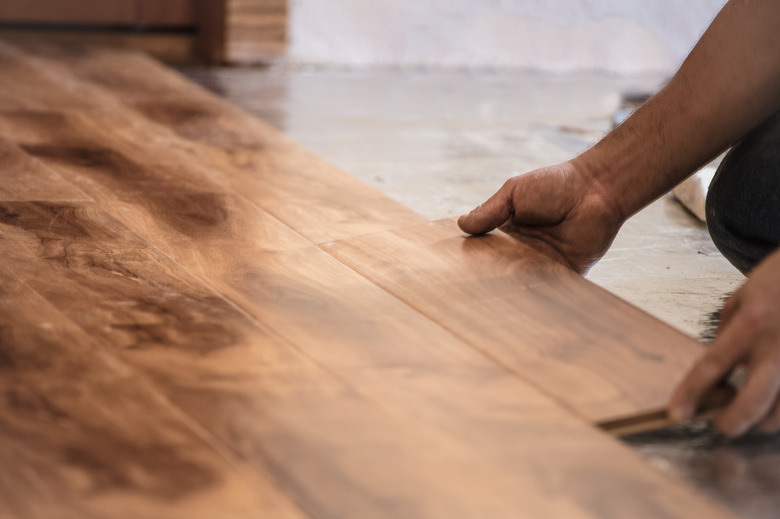How To Paint Laminate Floors
Painting the worn laminate floors in your house is a good way to extend their life, if it works, and according to Home Flooring Pros, that's a big "if." Laminate flooring has a tough wear layer that resists scuffs and stains — and paint — and if you do what's required to make it ready for your project, you might do more harm to the floor than good. Add the wrong type of paint or primer to the mix and your new floor might not look good for more than a few months.
On the other hand, painting laminate floors is easier and less expensive than replacing them, and if you're successful, you can create a whole new design motif. You might have to replace the floor if it doesn't work, but if the floor is worn, you'll have to do that even if you don't paint. You don't have much to lose by painting except for a few cans of paint and a day or two of your time, and you have pretty good odds of success.
Get the Floor Ready for Painting
Get the Floor Ready for Painting
Before you do any preparation, take a look at the most distressed areas and make sure the finish hasn't worn off. If it has, think twice about painting because the paint will soak in unevenly and the floor will look blotchy. Once the floor passes inspection and it's all systems go, there are a few preliminaries to take care of before you get down to it.
The first, of course, is to move everything out of the room. The second is, if possible, to remove the baseboards to make it easier to paint the edges without having to worry about them. The third is to vacuum thoroughly.
Painting Laminate Floors Calls for Deglossing
Painting Laminate Floors Calls for Deglossing
A laminate floor finish has to be deglossed, even if the finish is worn, or the paint won't stick. Start by washing the entire floor with a solution consisting of 1/2 cup trisodium phosphate per gallon of water. Wearing rubber gloves to protect your hands from the caustic detergent, wipe down the entire floor, being careful not to leave standing water that could seep through the planks and warp the flooring.
After you rinse with clear water and let the floor dry, you need to scuff with fine sandpaper to etch the finish. You could do this with a pad sander, but it's easier to rent a floor buffer and use a sanding screen to screen the floor. Go over the entire floor, then vacuum the dust and finish off by tacking the floor with a damp cloth.
Apply Primer, then Two Coats of Paint
Apply Primer, then Two Coats of Paint
Apply one coat of high-solids water-based primer using a brush, pad or floor finish applicator, which is a tubular foam pad on the end of a long handle. Let the primer dry overnight before proceeding.
The best paint to use is latex porch and floor enamel, but if you need a color that isn't available, you can also use interior enamel followed by one or two coats of clear polyurethane finish for protection. Apply the paint by moving the applicator parallel to the boards' length, and avoid perpendicular strokes, which make unsightly streaks.
For best results, consider screening the first coat after it dries and tacking off the dust before you apply the second coat. If you use interior enamel and coat that with polyurethane, screening the first coat of polyurethane before you apply the second gives a smooth, glossy finish.
